As the author of the DeanBeat column, I enjoy exploiting my high office to make terrible predictions about the future of the game business. The time has come again, as the new year has arrived and the Consumer Electronics Show is about to begin next week in Las Vegas.
Kaz Hirai, chief executive of Sony, will paint his picture of a vision for technology on Tuesday at CES, but I will preempt him in making predictions about what Gartner says was a $93 billion industry in 2013. I am sure that I will be proven wrong as early as his speech.
I continue to believe that the game business will be unpredictable. I didn’t expect, for instance, that current-generation games would make a huge comeback as evidenced by Grand Theft Auto V selling $1 billion worth in three days of sales. I also predicted Activision would launch Call of Duty: Modern Warfare 4, but instead, it came up with Call of Duty Ghosts. Nor did I expect the biggest surprise: SoftBank and GungHo would buy 51 percent of Supercell for $1.53 billion, a transaction that valued a company with two mobile games — Clash of Clans and Hay Day — at $3 billion.
One of the bets that GamesBeat’s team has already made (you see how I shifted responsibility to our broader team?) is that games will compete with other forms of entertainment for “total world domination.” That is the theme we chose for GamesBeat 2014, happening next September. We believe game companies will compete on the world stage across all platforms for dominance, and that competition within gaming will be global.
Still, the uncertainty is high, as we know very little about the slate of games that will hit us in the new year. There will be comebacks, bubble inflations, and crashes across what has become a very expansive game business. For fun and embarrassment, here’s my predictions from 2013 and 2012.
1. The next-generation war will be a dead heat
I believe that Sony and Microsoft are in the midst of a ground war akin to World War I. They’re equally matched in this round of competition. If either of them gains 100 yards of territory on the other, they’ll celebrate it as a decisive victory.
We’ll see the long-term market share take shape in 2014 in the competition between the Xbox One and the PlayStation 4. Last time around, both companies sold more than 80 million units a piece. Microsoft can outspend Sony on marketing, and it has Titanfall coming in March as an exclusive. But Sony has a more powerful system, and it is selling its machine for $100 less. While Sony has an edge right now, that may be just because it launched a week earlier than Microsoft. Meanwhile, one of the most promising next-generation games is Ubisoft’s Watch Dogs, which will be on both systems.
We’ll see which of the two makes big moves on the online front. Sony expects to launch its cloud-based Gaikai service in 2014. But Microsoft has a big advantage with its Xbox Live service and will likely have its own digital services to unveil this year.
2. Nintendo will dump the Wii U
Nintendo did the best job of launching new exclusive games in support of a console during the holidays, with the debut of Super Mario 3D World, which was one of the highest rated games of the season. But Nintendo clearly misread the market this time coming up with an under-powered box that tried to incorporate the appeal of tablet technology into a home console. Gamers were not impressed.
The Wii U has sold around 5 million units in its first year. That’s a paltry sum, considering the huge results Nintendo saw after the 2006 launch of the Wii. In the past two quarters, Wii U sales have crawled forward in the hundreds of thousands of units. Michael Pachter, analyst at Wedbush Securities, predicts the Wii U will sell under 20 million units by the end of 2016. That’s not bad. But he expects Sony to sell 37.7 million PS 4s by that time, and Microsoft to sell 29 million Xbox One consoles — even though the Wii U had a one-year head start on those systems.
The financial liability of having the third-place console will weigh down Nintendo’s progress. It has a strong position with the portable 3DS handheld, but it may very well need to cut its losses on a doomed console. The opportunity cost is too great.
Nintendo might try to keep the Wii U and then expand to new platforms like iOS, Android, and perhaps even rival consoles. But the effect will be the same for the Wii U.
3. Steam Machines will grab a foothold among PC gamers
Valve is debuting its SteamOS, Steam Controller, and Steam Machines in 2014. The latter will be launched by hardware partners, some of whom will announce systems at Valve’s press conference at CES. With only 300 employees, Valve may seem puny as a challenger to Microsoft’s Windows gaming ecosystem and the consoles. But Valve has a huge library of Steam games, a following of indie game fans, and 65 million users.
Some of those fans will migrate from the PC to the living room by playing their games on Steam Machines. But it’s not clear if Valve will build a big enough market for Steam Machines to really matter. A lot depends on whether it truly embraces the “open” alternative strategy. If it simply wants to make sure that Microsoft doesn’t shut down the Steam store on Windows, then that’s not a good enough reason to launch an alternative machine.
Valve has built up enough goodwill to be able to have a successful launch. But sustaining an alternative won’t be easy. The big questions are whether PC gamers are really fed up with Microsoft or not and if they are willing to pay for yet another machine to avoid the Microsoft tax. A lot will also depend on the ultimate price for Steam Machines. If the Steam Machine hardware partners price them at more than the PlayStation 4 or Xbox One consoles, then Valve will lose. If Valve’s system is ultimately closed, then it’s not going to be a better alternative.
4. Virtual reality will gather momentum
Oculus VR has enough momentum, attention, and funding to launch its virtual-reality goggles, the Oculus Rift. The $75 million vote of confidence from investor Marc Andreessen and other venture capitalists will help Oculus execute on its promises and build a larger ecosystem of developers, who need to provide the critical VR games to make it take off.
There will probably copycats and new examples of cool applications for the technology, which could spread beyond games. The good thing for VR is that other companies are stepping forward with cool innovations, like Sixense (a maker of gesture control systems), and Virtuix, the maker of the Omni virtual reality treadmill. That means that Oculus isn’t the only company pouring money into virtual reality.
Oculus’s recruitment of John Carmack, the tech guru of id Software, also brings it instant credibility. As Oculus VR chief executive Brendan Iribe observed, Carmack specializes in getting more performance out of a platform than others think is possible. And Carmack has set his sights on making virtual reality work on mobile platforms. I wouldn’t bet against him.
But Oculus should recall the missteps of Ouya, which launched quickly but didn’t have a killer application for its micro-console. You only get one chance to make a good impression.
5. Alternatives to game controllers will grow stronger
Tobii and SteelSeries just proclaimed they will launch an eye-tracking control system for games in 2014. That should tell you that the decades-old game controller may soon be on its way out. Computing is going through a revolution in user interfaces, and game controls are certain to go through a similar kind of change. The worst prediction is the one that technology will stand still and everything will stay the same.
When it comes to game controllers, technology has stayed the same for too long. We’ve already embraced touchscreens in a big way with tablets and smartphones. Voice commands are just getting a start with the Xbox One’s new version of Kinect. Google Glass has inspired game developers to create games for wearable devices.The number of new user interfaces is blossoming. One of them will be right for gaming.
But eye-tracking could very well enable both better precision and ease of use, as everybody knows how to aim with an eye. All it requires is a small piece of hardware that can detect your eye movements. The technology has been in refinement for a decade now. Its time may have come.
6. The MOBA market will have a shakeout
The multiplayer online battle arena (MOBA) game League of Legends created a whole new genre and built a company, Riot Games, with more than 1,000 people. LoL has fueled the eSports craze and helped free-to-play take off in Western countries. And it has fueled the rise of livestreaming on Twitch, the popular game video broadcasting service.
But League of Legend is getting a lot of competition from Valve’s Dota 2 and will face more from Blizzard’s upcoming Heroes of the Storm. But it remains to be seen if MOBA can support more than one company. The copycat competitors are assuming that it will be an entire market behind the MOBA craze. But if it’s a fad or a one-hit market, there will be a lot of dead bodies on the floor.
The MOBA market may very well be a winner-take-all market, or close to it. That’s because of the strong network effects that happen when a community or eSports fans get behind a title and stay with it.
7. Europe and Asia will stay ahead of the U.S. in mobile games
This trend has already happened, with the rise of games like Candy Crush Saga, Clash of Clans, and Puzzle & Dragons. But the signs are strong that the Europeans and Asians will capitalize on their success and use it to move in the U.S. market in a big way.
Companies like Supercell, GungHo Entertainment, and King are raising big piles of capital based on valuations that are at historic highs. They have cracked the nut for monetizing mobile games, and that is a big deal because there are a billion mobile devices.
Meanwhile, U.S. rivals such as Zynga have stalled. And some companies, like Epic Games (maker of the Infinity Blade series) have already sold chunks of their companies to Asian investors such as Tencent. You can expect the Europeans and Asians to go shopping among their lesser-valued U.S. rivals. In Asia alone, there are 30 companies that have more than $1 billion in cash and have a history of buying game companies.
The U.S. is strong in consoles, with big companies like Activision Blizzard, Electronic Arts, and Take-Two Interactive. But here’s an interesting fact. Even after the huge success of Grand Theft Auto V, which generated $1 billion in sales in its first three days, parent company Take-Two Interactive is valued at $1.56 billion, as of today’s stock market price. By contrast, Supercell is valued at $3 billion.
But the Europeans and Asians shouldn’t get too confident. Indie successes can come from anywhere.
8. Rising user acquisition costs will bring victory to the brands
The cost of acquiring a new user has risen to crazy levels. We know that because market researchers such as SuperData have found that the cost per install (CPI, which is the measure of what it costs in advertising to get a user) had risen to $2.73 for mobile games as of October. And SuperData found that the average revenue per user was $1.96. With the holidays, competition was expected to drive the cost of user acquisition even higher. And that means there will be a bloodbath with many mobile game developers spending more for users than they bring in from those users.
The well-known brands and viral mobile hits can get more users without spending a lot. The unknowns will get squeezed in this kind of market. And if Disney comes in with a massive brand, it will be hard to overcome that brand, no matter how much you spend. Former EA chief executive John Riccitiello predicted the inevitable rise of brands in mobile in a recent talk.
But it pays to remember. The “brands” aren’t necessarily traditional brands. They can come from anywhere, in part because mobile hits beget new mobile brands among users who are spending all of their time with mobile devices. Disney recognized this, using the Temple Run brand in mobile to launch some successful endless runner games such as Temple Run: Brave and Temple Run: Oz.
Another important thing for the platform owners: platform owners can push around game developers when they’re small. But when those developers create huge brands, the power shifts. Consumers won’t allow a platform owner to push around brands that they love. Apple, for instance, competes with Netflix, but it tolerates Netflix’s presence on iOS devices because consumers want it.
This doesn’t assure brands of victories in 2014. But the momentum of the market is in their favor.
9. Narrative will matter in games for all platforms
If there’s a lesson from my picks for the top games of 2013, it is that a strong story matters. The Last of Us, BioShock Infinite, and even Grand Theft Auto V had strong narrative threads that tied the gamers to the games for long hours. With consoles games, the platform was stable for seven years and that allowed developers to pour their energy into the craftsmanship of making a game, rather than learning a new technology. The result was a bunch of wonderful games with memorable scenes and strong endings.
The makers of online games and mobile games should also learn this lesson. Telltale has learned how to tell great stories in bite-sized episodes, much the same way that TV shows do. They put the cliffhangers at the end so that players can’t wait for the next episode. Remedy Entertainment is pursuing the same strategy with its Quantum Break game, which will be accompanied by a TV show. With the next-generation consoles, the opportunity to build engaging games is even bigger, and the technology isn’t as hard to wrestle with at the outset.
I’m not saying games should be more movie-like. But game developers will use their medium to tell memorable stories in their own way. I think that mobile game developers should pay attention to narrative too. Their platforms are younger, but they are becoming more capable. And narrative is still a great way to distinguish your game from somebody else’s.
10. Personal gaming will thrive
The combination of a treasure trove of data about users and the ability to create different versions of a game for different users means that game developers will be able to create personalized games for just one person. These kinds of games are possible given the kind of data that mobile devices and online sites can collect about users.
We’ve seen that purely data-driven games aren’t by themselves going to be successful. Personal gaming will likely require a balance of smart game design and big data analysis to deliver games that are much more addictive than anything we’ve seen to date.
Will Wright, the founder of the game startup Syntertainment, has hinted that personal gaming will be the wave of the future. He sees these kinds of games as blending reality, entertainment, and mobile location services. 2014 might show us some of the early successes in where this category can go. But in the long term, the encouraging thing is that indies, such as Wright’s new company, might very well use this targeting technology to deliver games that outdo the blockbusters, which try to target a single mass market.
But the usual warning remains. Keep sacred the user’s wish for privacy, or all else fails.
And please take our poll about which prediction is your favorite, and leave a comment explaining your choice below. Or use the comments to make your own predictions.
VentureBeat's mission is to be a digital town square for technical decision-makers to gain knowledge about transformative enterprise technology and transact. Learn More

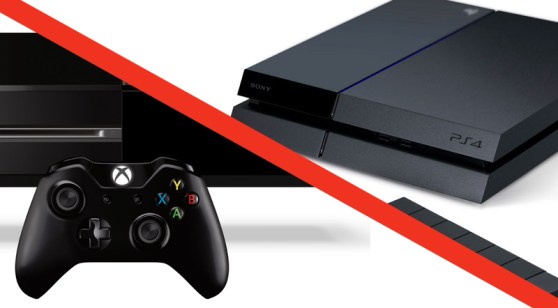
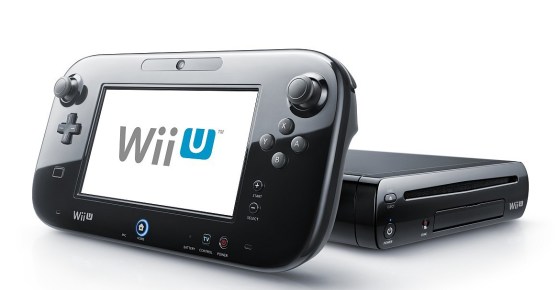
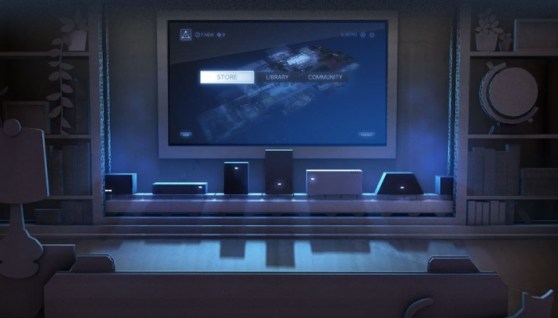




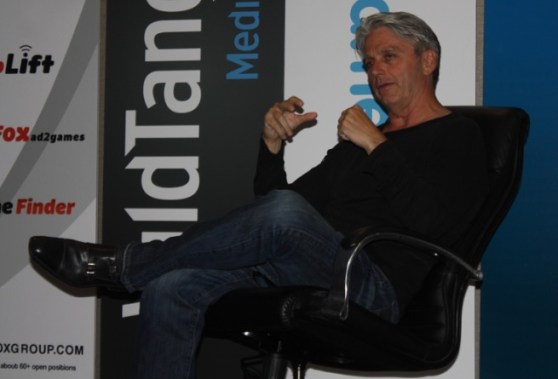

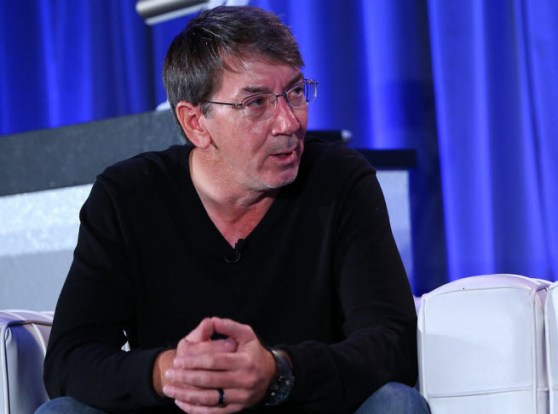






![Reblog this post [with Zemanta]](http://img.zemanta.com/reblog_e.png?x-id=6098efd0-976c-4412-a489-29bd223f0dc7)
